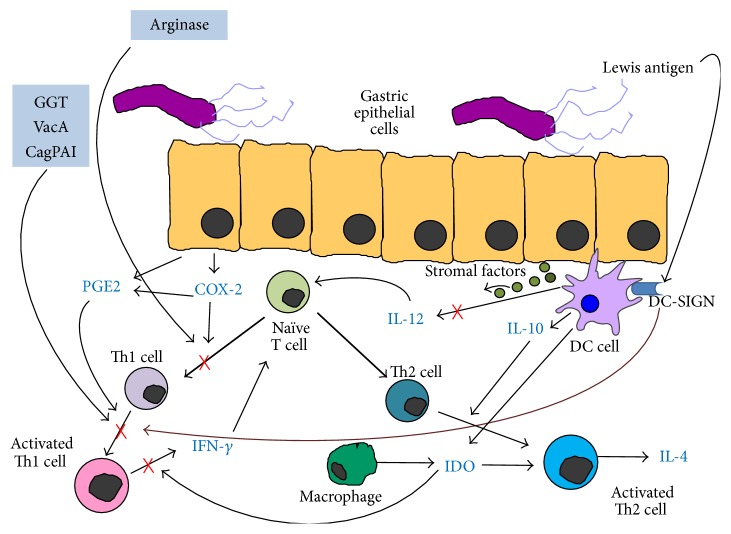Figure 1.
The biased Th1/Th2 cells response. The vacuolating cytotoxin (VacA) and the gamma-glutamyl transpeptidase (GGT) secreted by H. pylori inhibit Th1 cell proliferation by inducing a G1/S cell cycle arrest [28–31], while the cytotoxin-associated gene pathogenicity island (cag PAI) promotes Th1 death by the induction of Fas ligand [33]. The committed T naïve cells are unable to differentiate into Th1 line due to the enzyme arginase possessed by H. pylori [32]. H. pylori-induced cyclooxygenase- (COX-) 2 activation, alone and in conjunction with its product prostaglandin (PGE), suppresses Th1 polarization [34, 35, 39]. The H. pylori-induced expression of indoleamine 2,3 dioxygenase (IDO) limits the IFN-γ production by Th1 cells and favours the activation of Th2 cells [36]. Stromal factors suppress the IL-12 production by mucosal dentritic cells (DCs) [37], whose dendritic cell-specific ICAM-3-grabbing nonintegrin (DC-SIGN) receptor interacts with Lewis antigen expressed by H. pylori thus blocking Th1 cell recruitment [38].

